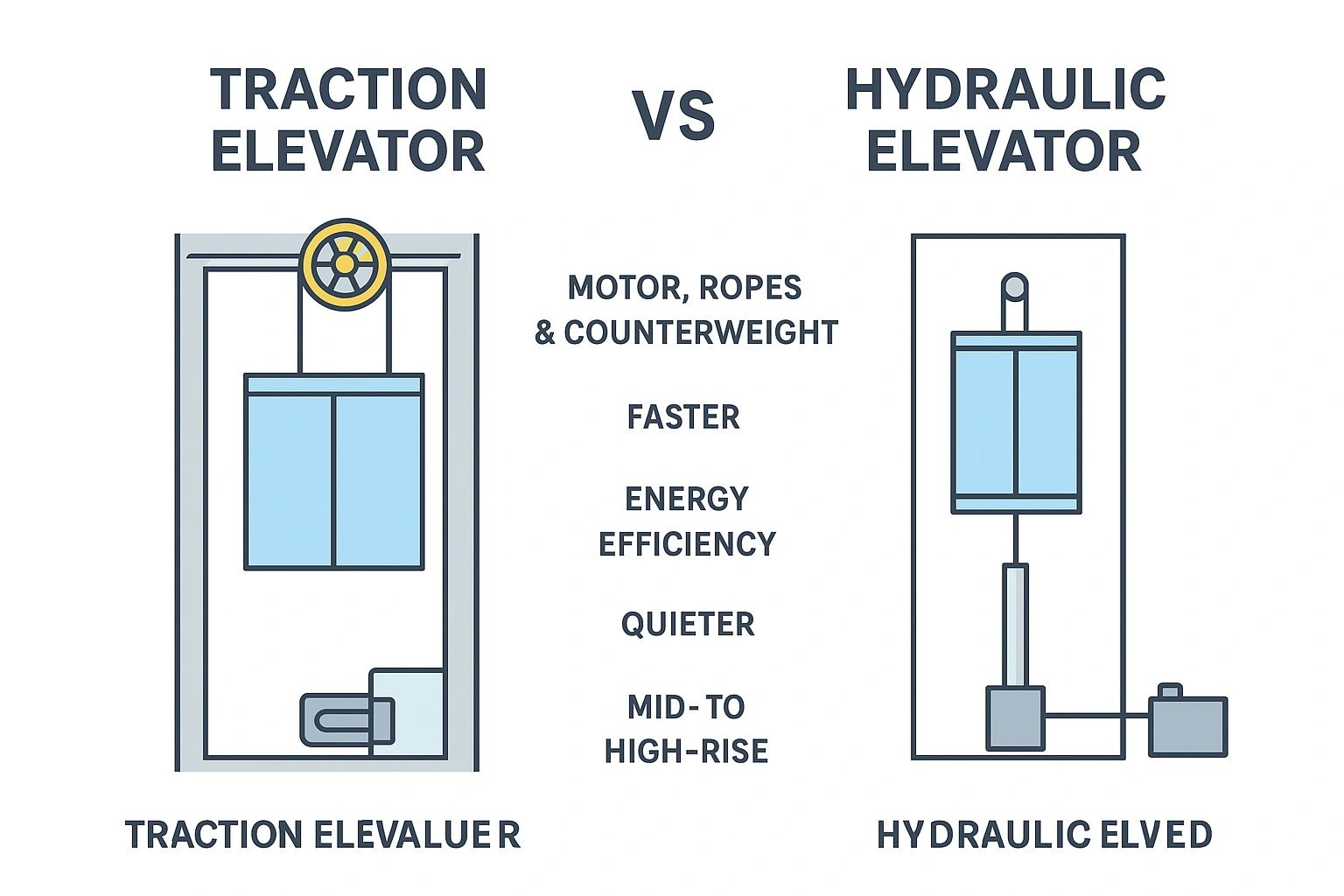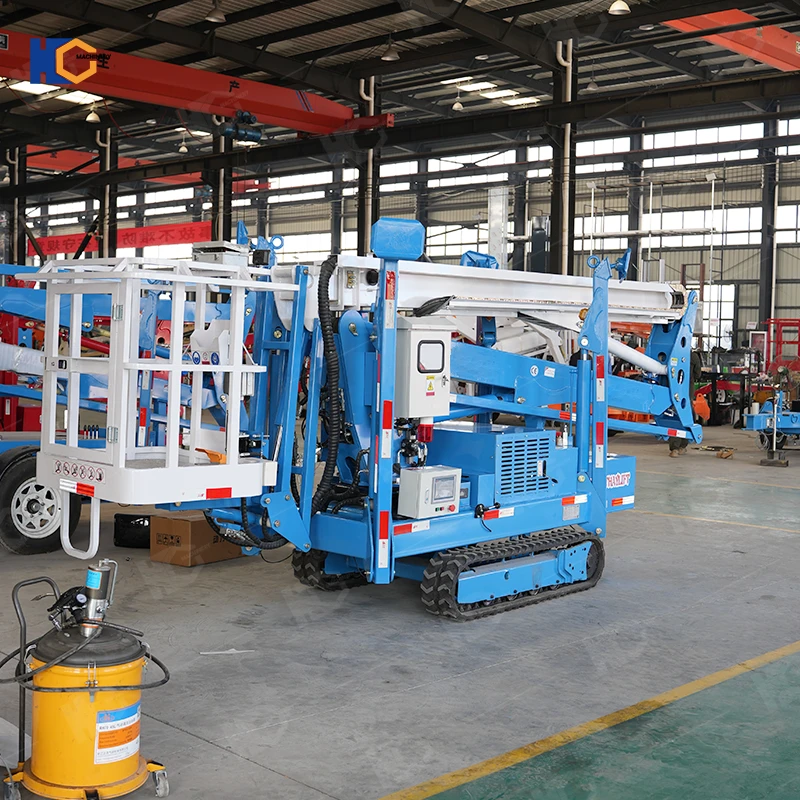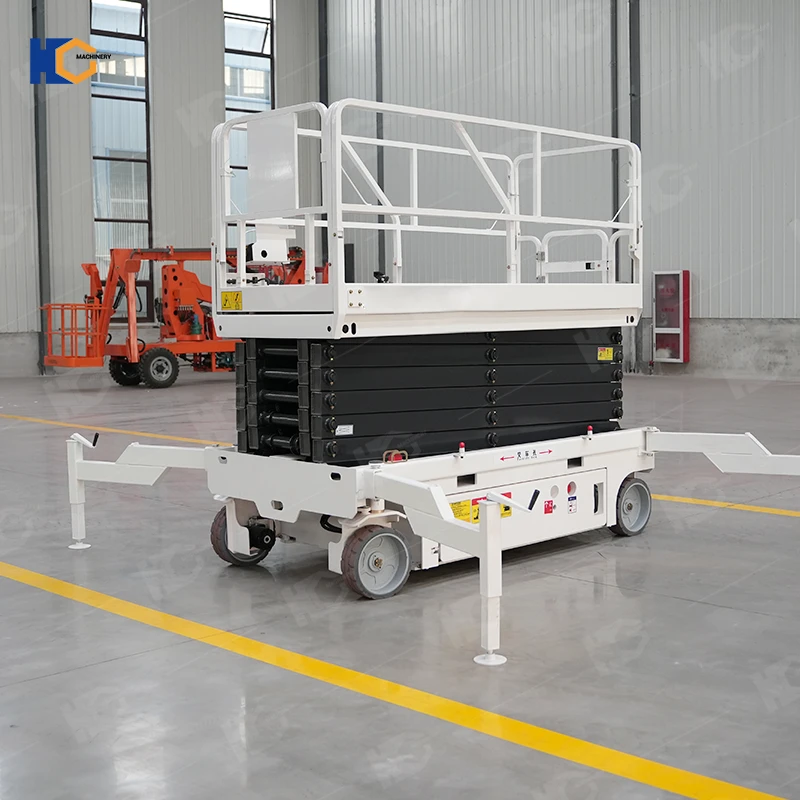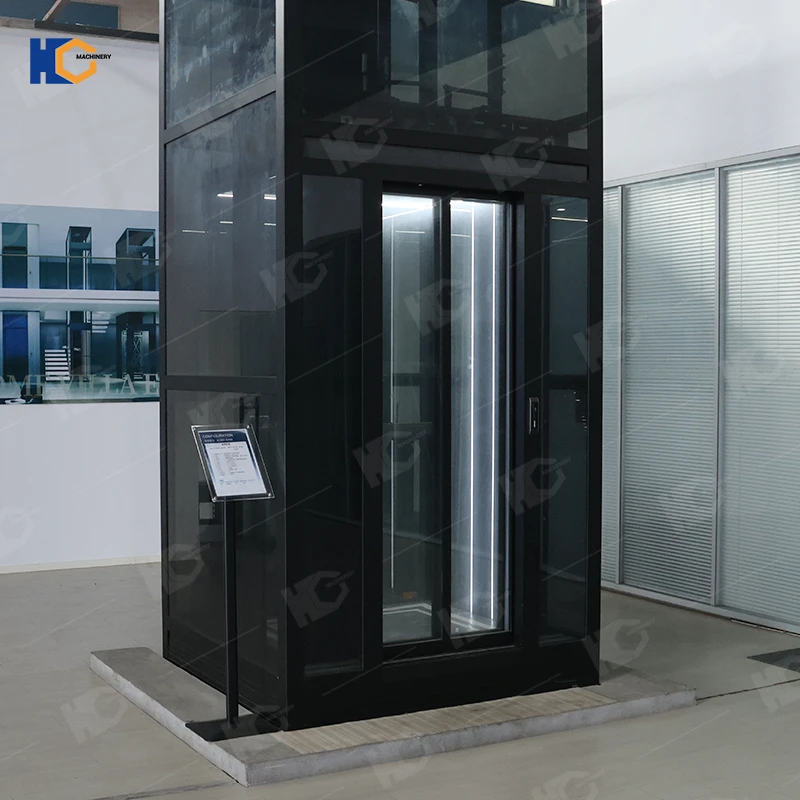If you’re planning to install an elevator in your home or commercial building, one of the first questions you’ll face is: Should I go with a traction elevator or a hydraulic elevator? Both options can make your daily life easier and more comfortable — but they work differently, cost differently, and fit different types of buildings. Let’s break it down in plain English so you can make the best choice.
How They Work
Traction elevators use steel ropes or belts attached to a counterweight and motorized sheave (wheel) to move the elevator car up and down. Think of it like a giant pulley system — the motor turns the sheave, and the ropes move the car smoothly between floors. This system is very similar to what’s used in high-rise buildings and modern skyscrapers
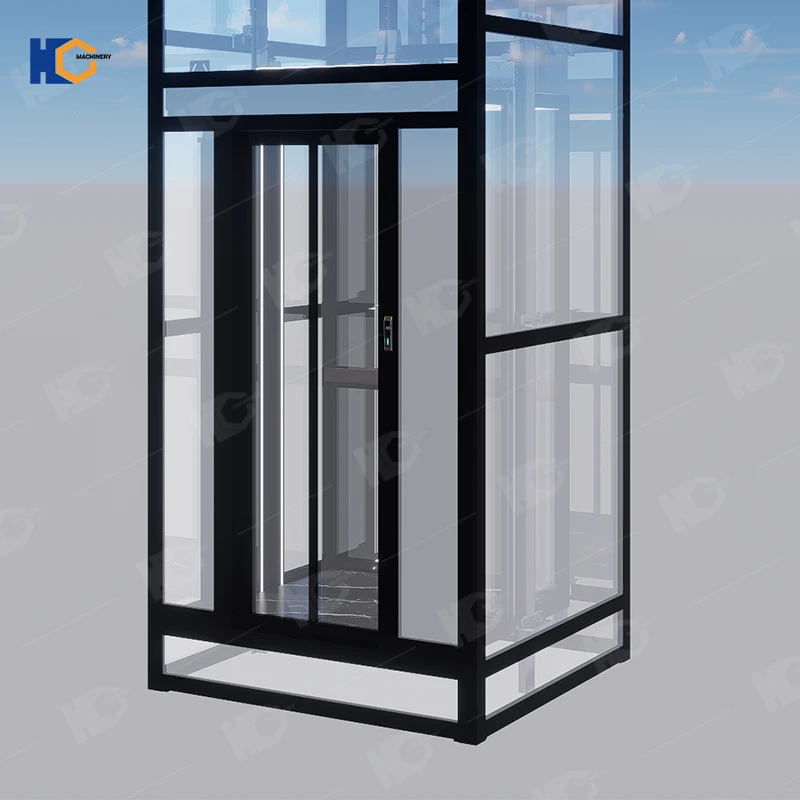
Hydraulic elevators, on the other hand, use fluid power. A piston and cylinder system pushes the car up using hydraulic oil, and when it’s time to go down, the oil is released back into the reservoir, allowing the car to descend. It’s a simple and reliable mechanism, perfect for short buildings.
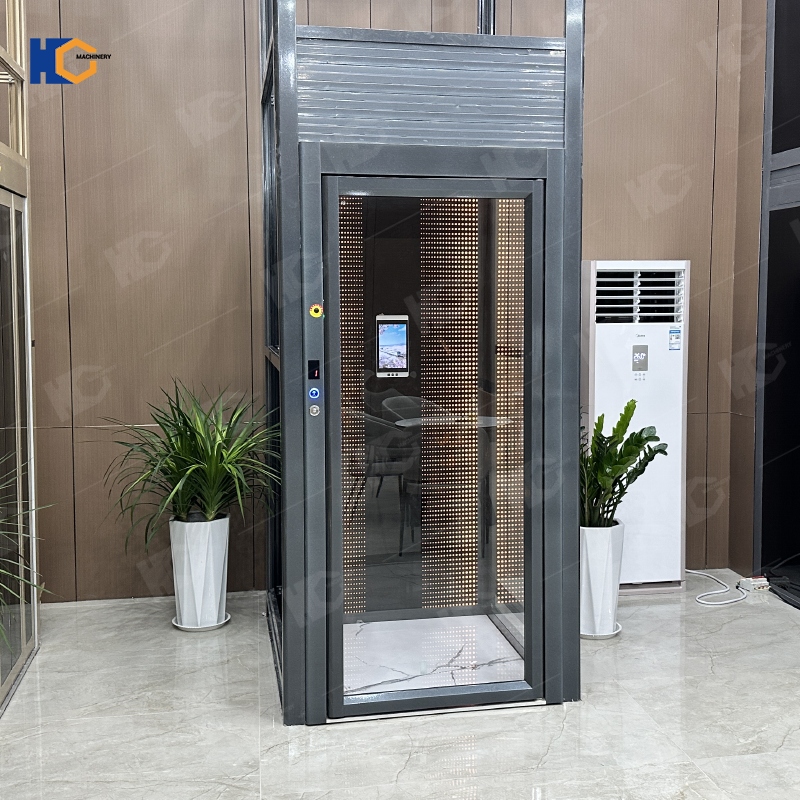
⚙️ Key Differences
| Feature | Traction Elevator | Hydraulic Elevator |
|---|---|---|
| How it Works | Motor, ropes, and counterweight system | Piston powered by hydraulic oil |
| Speed | Faster (200–500 ft/min) | Slower (30–150 ft/min) |
| Energy Efficiency | High (uses counterweight balance) | Moderate to low (uses oil pressure) |
| Noise Level | Quieter and smoother | Louder due to pump operation |
| Building Height | Ideal for mid- to high-rise (4+ floors) | Best for low-rise (2–5 floors) |
| Maintenance | Requires rope inspection and motor service | Requires oil replacement and leak checks |
| Machine Room | Optional in new models (MRL) | Usually required for pump system |
| Cost | Higher initial cost | Lower upfront cost |
| Eco-Friendliness | Clean, no oil needed | Uses hydraulic oil (can leak) |
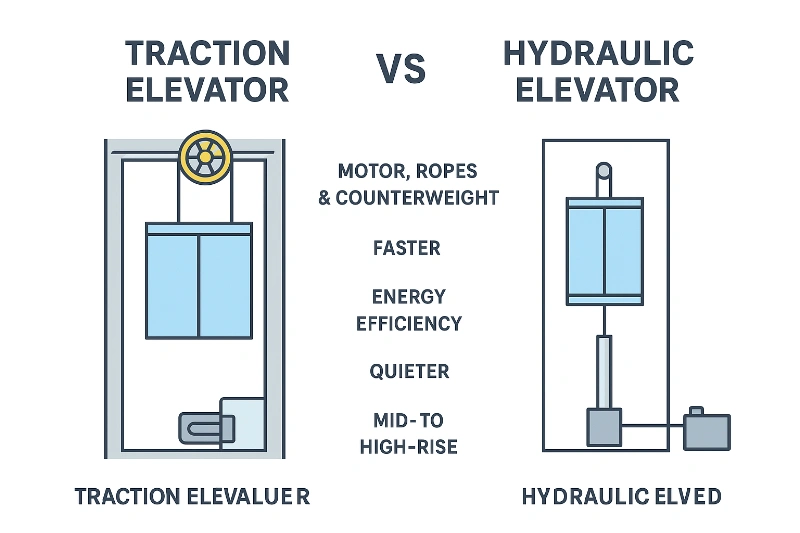
Which One Fits Your Building?
If you’re installing an elevator in a residential home, a hydraulic elevator is often the go-to. It’s cheaper, easier to install, and doesn’t require complex counterweight systems. For example, if you’re adding a small 2- or 3-stop lift to your villa or townhouse, a compact hydraulic home elevator works great — quiet, simple, and reliable.
But if you’re planning for a modern multi-floor home or office, a traction elevator might be the smarter investment. It’s faster, energy-efficient, and sleek in design. The ride is smoother, and you can go higher without worrying about performance or power limits.
Real-World Example
Imagine you’re a homeowner renovating a three-story house. You want something affordable, easy to maintain, and safe — a hydraulic home lift would likely be the better option.
Now, imagine you’re building a five-story commercial office. You need a lift that moves faster, handles more trips daily, and looks high-end — that’s where a traction elevator really shines.
Maintenance & Operating Costs
Traction Elevators:
Require routine inspection of ropes, motor, and control systems. Since there’s no oil, they’re cleaner and more eco-friendly. Long-term running costs are lower because of better energy efficiency.Hydraulic Elevators:
Need occasional oil changes, seal replacements, and leak checks. The pump system may need more frequent service in heavy-use environments.
While hydraulic systems are cheaper upfront, traction elevators generally save more money in the long run due to lower power consumption and less frequent maintenance.
Environmental Impact
If sustainability matters to you, traction elevators have the edge. They don’t use hydraulic oil, which can be harmful if leaked. Modern gearless traction models are energy-saving, using up to 50% less power compared to traditional hydraulic units.
Price Comparison
Hydraulic Home Elevator: $10,000 – $18,000 (including installation)
Traction Home Elevator: $15,000 – $25,000 (depending on height and features)
The price gap reflects different technologies and materials, but remember — energy efficiency and long-term maintenance often make traction systems more cost-effective over time.
Buying From China: Smart and Affordable
If you’re considering installing an elevator, Chinese manufacturers like Huichuang Lift offer both traction and hydraulic models at factory-direct prices. You can choose custom cabin sizes, materials (stainless steel, glass, or aluminum), and even voice control or smart home integration options.
Chinese factories also provide CE-certified safety systems, fast delivery, and global installation support — all at a lower cost than Western suppliers. That’s why many international builders and homeowners now source their home lifts and commercial elevators directly from China.
✅ Final Thoughts
In simple terms:
Choose a hydraulic elevator if you want simplicity, low cost, and easy installation for a small building.
Go for a traction elevator if you value speed, energy savings, and long-term performance for taller buildings.
No matter which one you pick, make sure to buy from a trusted manufacturer that offers safety certification, after-sales service, and customization options — and if you’re sourcing globally, China is one of the best places to start.
